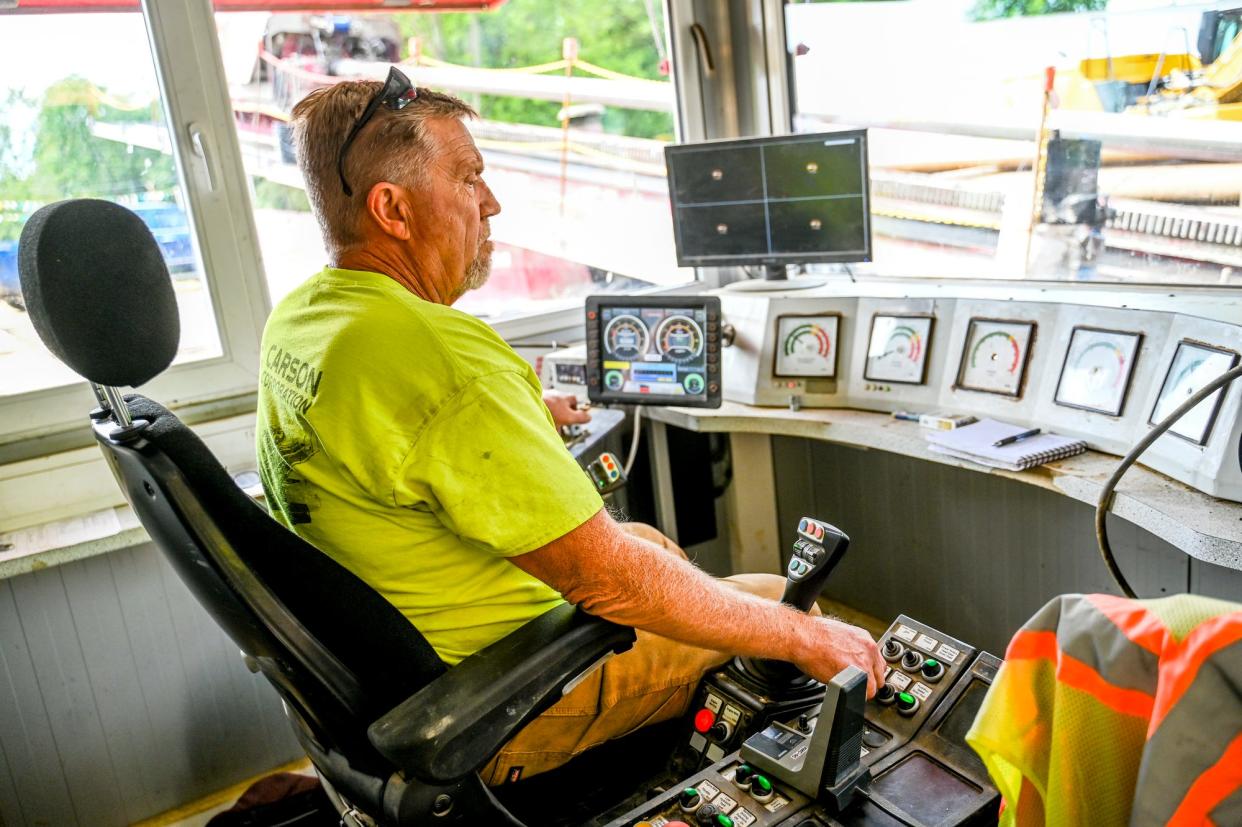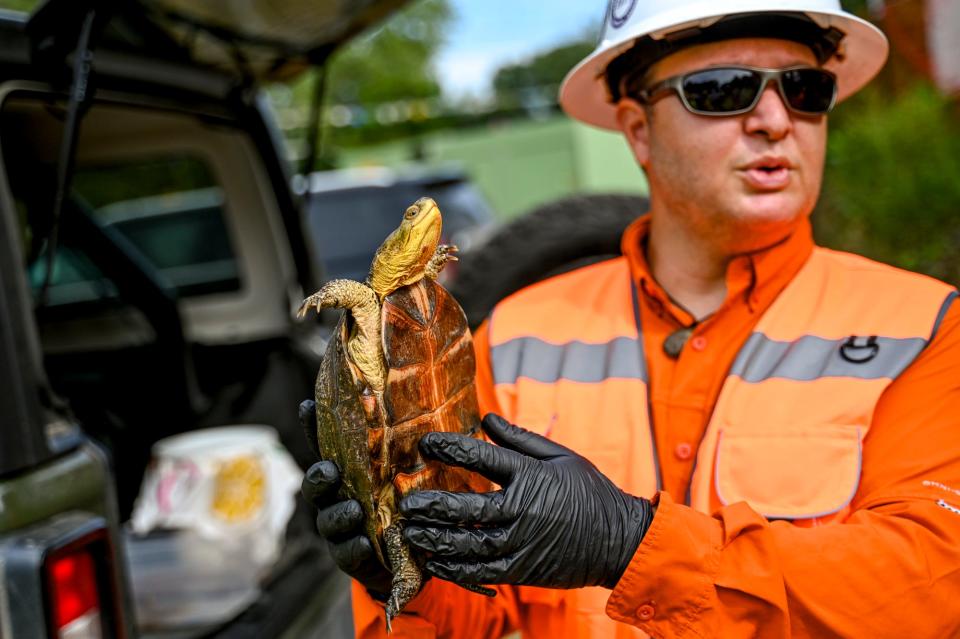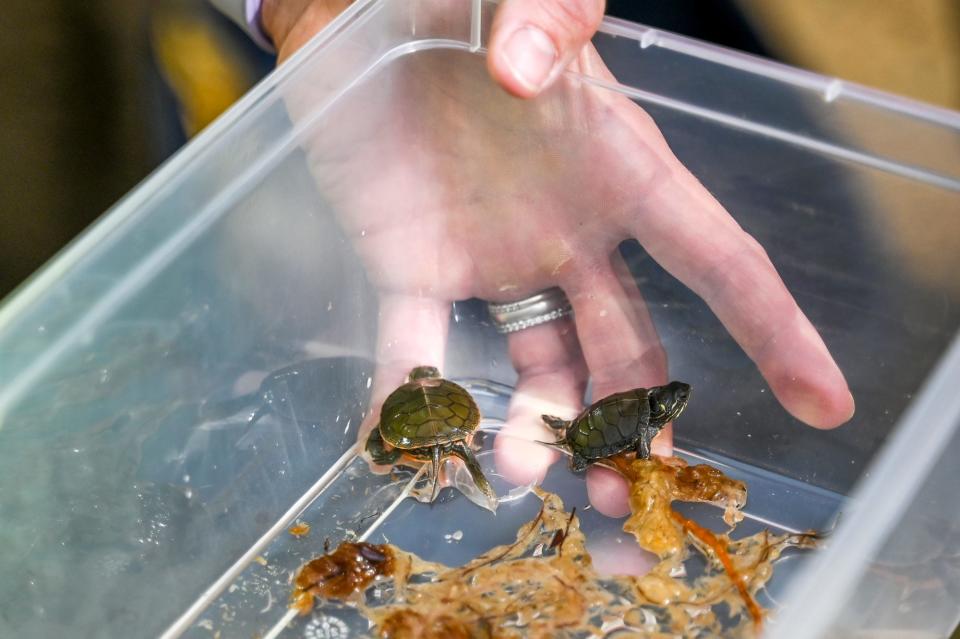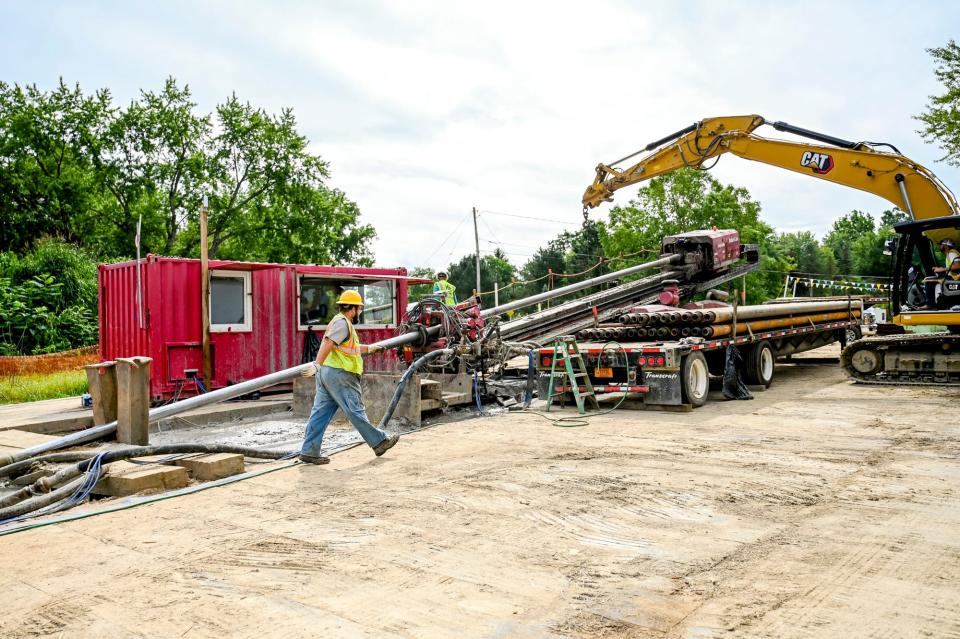Why a natural gas pipeline is being built in mid-Michigan as companies aim for more green

UNADILLA TWP. — Juliet Matko, who has spent a decade working on a $550 million Consumers Energy pipeline project, said she gets asked one question a lot: Why is a utility company investing in a natural gas pipeline, given all the talk of green energy goals?
Matko, who spoke to a State Journal reporter while driving between construction sites on M-52 in Ingham County Monday, said the answer is simple: Natural gas is vital at the moment for Michigan residents who use it to heat their homes.
Natural gas is the primary heating fuel in more than 75% of Michigan homes, and the state has over 50,000 miles of distribution pipelines and over 3 million service lines, according to the Michigan Public Service Commission.
Matko is the project manager for the replacement of the 1940s era, 20-inch steel Mid-Michigan Pipeline that runs between Chelsea in Washtenaw County northwest through Livingston, Ingham, Shiawassee and Clinton counties to Ovid. The project is to replace the old piping with new, 36-inch steel pipeline over the 55-mile span. Construction work started this summer with 30 miles of pipe and the rest is planned for next summer.
The pipeline is being built using two techniques: Trench digging, relatively close to the surface and typically in farm fields, and horizontal drilling, typically in hilly or wetland areas, said Matko.
The pipeline can deliver natural gas north or south and aims to keep taking advantage of Michigan's geography: Unique underground natural storage tanks − remnants of Michigan's prehistoric history, Matko said − let the utility buy cheaper natural gas during the summer and pipe it northward for storage before sending it back down to southern Michigan homes during the winter. The state has the nation's largest underground storage capacity, about one-eight of the nation's capacity, according to the U.S. Energy Information Administration.
This year's work will go from Chelsea to Webberville and next year's 25-mile stretch will go from Webberville to Ovid, crossing through Sleepy Hollow State Park.
At one construction site, three 500-foot lengths of pipe sit waiting to be pulled into place.
Matko said the pipelines are being replaced on a company maintenance schedule, with one phase being finished this year and the second phase next summer. She said the project has been in the works for more than a decade, with planning and permits from a variety of state and federal regulators as well as updating easement agreements with landowners.
The company is spending $550 million on the replacement pipeline.

Relocating turtles and snakes
The construction site is unusual in part for its conservation work, said David "Turtle Dave" Mifsud, who runs Herpetological Resource and Management, a Chelsea-based contractor for Consumers Energy.
He said on most of the construction sites he's worked, workers would typically not stop heavy equipment to avoid running over a snake.
But at the pipeline, and other Consumers Energy projects he's been involved with, he has seen heavy equipment operators halt construction and use their buckets to retrieve snakes in difficult terrain where people couldn't walk. The animals are moved nearby but out of the way, some are allowed to grow larger before release.
"You don't often see that," Mifsud said.
The pipeline runs into the territory of the Eastern Massasauga Rattlesnake. Workers have only found one of those and it was during the winter, said Lindsey Johnson, an environmental engineer with Consumers Energy.
More common are the Blanding's turtles, which are studied because they show few signs of aging and can reproduce up to ages of 80 to 90 years-old, said Mifsud.
The turtles are classified as a species of special concern in Michigan.
When construction workers find wildlife, like a clutch of white bubbles that was preserved a few weeks ago and is now a handful of baby snapping turtles, the animals can be saved, Mifsud said.
Green energy goals

Consumers Energy, like other Michigan utilities, is aiming for aggressive green energy goals.
Michigan regulators are expecting the state to get to a 35% renewable threshold by 2035. The state currently generates about 11% of its energy from green sources: Most of that, about 80%, is from wind with solar making up 12% of the green slice.
Solar and wind power has slowly been increasing in Michigan and will need to considerably ramp up to meet the state and utility goals.
Matko said the natural gas project will continue to move gas during the transition period and that the larger pipelines can also mean that the gas can move with less energy used.
Contact Mike Ellis at mellis@lsj.com or 517-267-0415

This article originally appeared on Lansing State Journal: Consumers replacing 55 miles of natural gas pipeline in Lansing area

